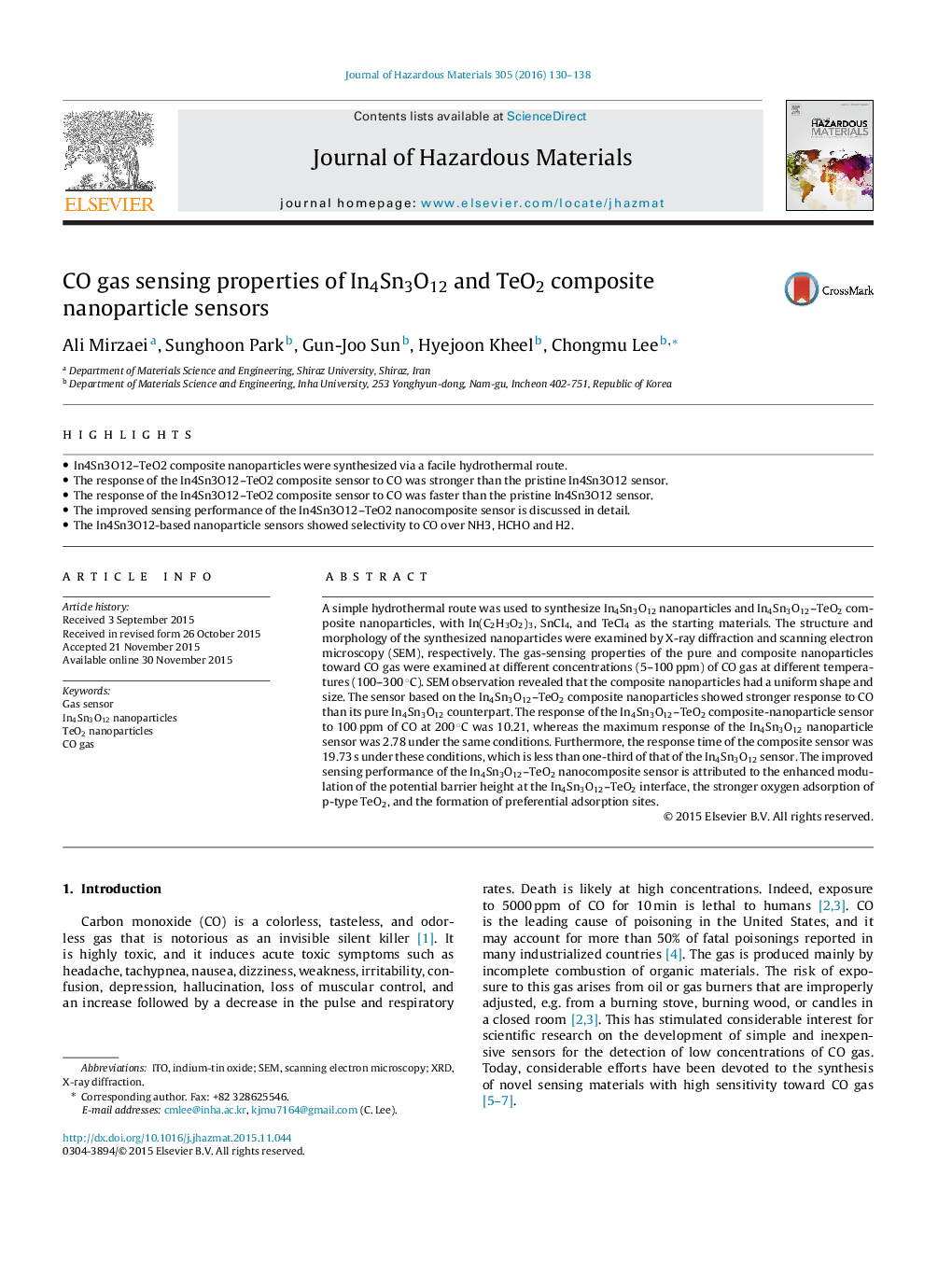| Article ID | Journal | Published Year | Pages | File Type |
|---|---|---|---|---|
| 575529 | Journal of Hazardous Materials | 2016 | 9 Pages |
Abstract
A simple hydrothermal route was used to synthesize In4Sn3O12 nanoparticles and In4Sn3O12-TeO2 composite nanoparticles, with In(C2H3O2)3, SnCl4, and TeCl4 as the starting materials. The structure and morphology of the synthesized nanoparticles were examined by X-ray diffraction and scanning electron microscopy (SEM), respectively. The gas-sensing properties of the pure and composite nanoparticles toward CO gas were examined at different concentrations (5-100 ppm) of CO gas at different temperatures (100-300 °C). SEM observation revealed that the composite nanoparticles had a uniform shape and size. The sensor based on the In4Sn3O12-TeO2 composite nanoparticles showed stronger response to CO than its pure In4Sn3O12 counterpart. The response of the In4Sn3O12-TeO2 composite-nanoparticle sensor to 100 ppm of CO at 200 °C was 10.21, whereas the maximum response of the In4Sn3O12 nanoparticle sensor was 2.78 under the same conditions. Furthermore, the response time of the composite sensor was 19.73 s under these conditions, which is less than one-third of that of the In4Sn3O12 sensor. The improved sensing performance of the In4Sn3O12-TeO2 nanocomposite sensor is attributed to the enhanced modulation of the potential barrier height at the In4Sn3O12-TeO2 interface, the stronger oxygen adsorption of p-type TeO2, and the formation of preferential adsorption sites.
Related Topics
Physical Sciences and Engineering
Chemical Engineering
Chemical Health and Safety
Authors
Ali Mirzaei, Sunghoon Park, Gun-Joo Sun, Hyejoon Kheel, Chongmu Lee,
